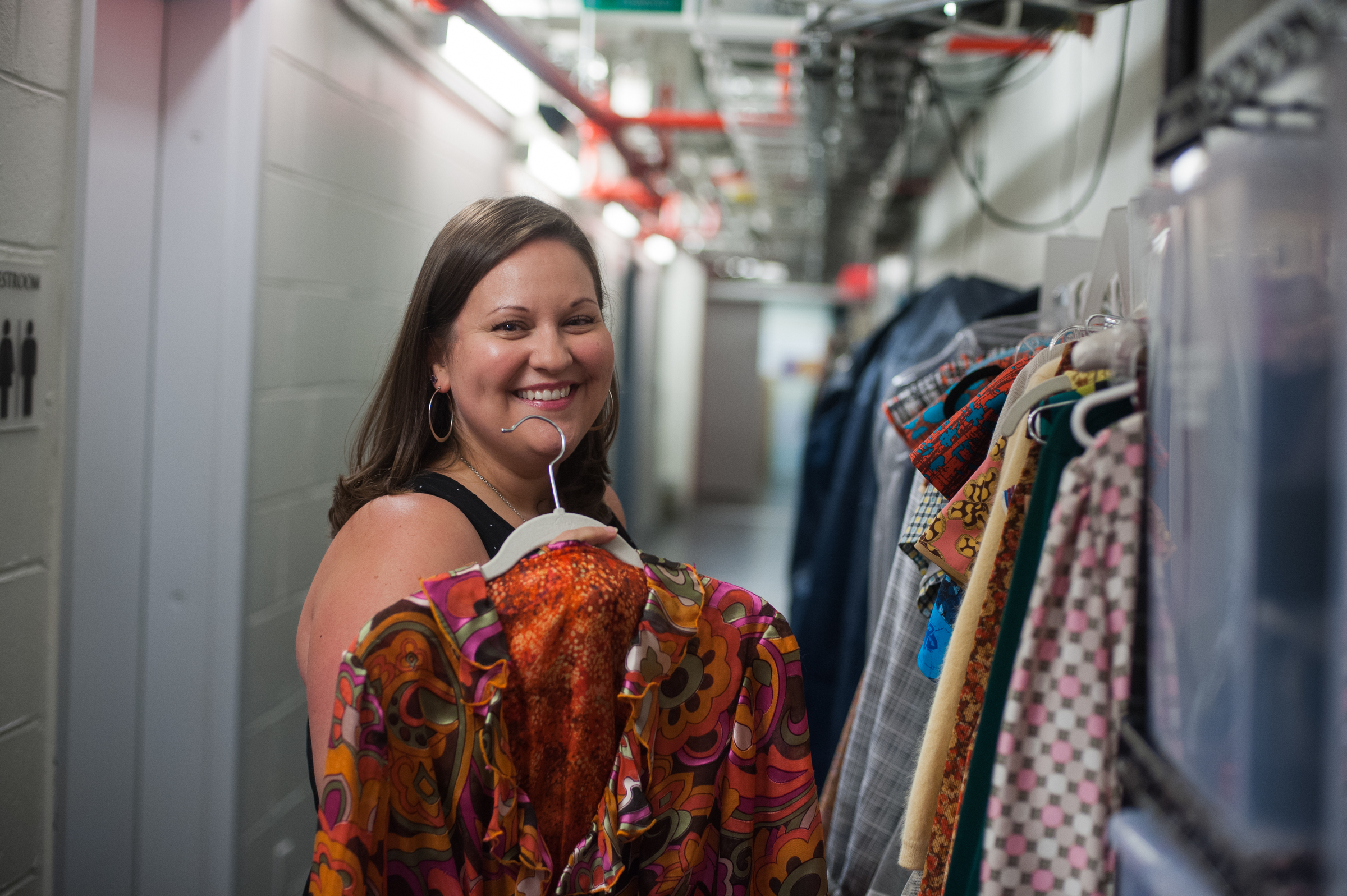The clothes make the man… or in this case, the character. Costumes play such an important role in theatre and prepping them for a production is a lot of work! Our friend, Shana Albery, who’s worked as a wardrobe supervisor for productions like Finian’s Rainbow and Beautiful: The Carole King Musical, gave us three tips on how to prep any costume for an upcoming show.
1. If your costume is from your closet…
“If it’s a normal everyday garment that needs to do something extraordinary, like it needs to be danced in or stretch in some way, then you have to sew in a gusset.” A gusset is a football or diamond-shaped piece of fabric you sew into the seam of a garment (often times the sleeve) to allow additional room to expand and, like Shana says, help it do something extraordinary. For example, someone wearing a suit jacket wouldn’t normally be able to fully raise their arm, but if you open the underarm seam and add a gusset, they’ll have extra room to move more freely.
2. If you’re working with a vintage piece…
Older clothing is especially tricky to work with, since fabric and thread can rot over time. Be very careful if you need to seam rip a vintage piece, since there’s a chance that things could literally fall apart. (You might rip more than you need or it might rip across the grain.) If the fabric seems to hold up, then make sure your thread is also strong. High-quality thread that’s produced today can have a long shelf-life (up to 50 years!), unlike older thread produced 15 or 20 years ago, so get new spools and avoid using the ones you find in an old sewing kit backstage.
3. If there’s a rip…
The best way to deal with a rip is to prevent it from happening in the first place. “It’s always good to identify what the garment needs to do as you’re putting it into a show and make sure it can do that, because if it’s ripped, that’s a whole different disaster.” If a rip does occur (like in a pair of pants) and you have the time, add a wedge of stretch fabric to between the seams. Don’t try to sew the original seam back together; if it was already tight enough to break the thread, it will just bust open again.
Aside from prepping a costume for a production, caring for it afterwards is just as important. For example, you can use baby wipes to remove stains and spray vodka to eliminate odors (if you can’t wash it after every use). The longer a costume lasts, the more likely it can be used in future productions and help minimize textile waste.
Break a leg!
Have you heard about ProductionPro? Check out digital scripts and scores for your show plus a suite of tools to help you have a successful rehearsal process.

